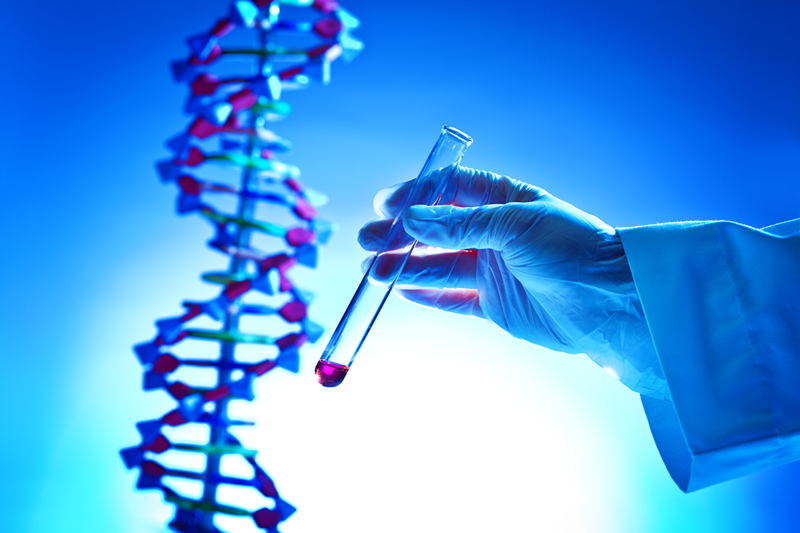


Studying the virus in real time
Photo by iStock December 08, 2020
During a pandemic, curriculum becomes more real for computational biology students
The coronavirus (COVID-19) is still, after a year of wreaking havoc worldwide, largely a puzzle. As physicians and researchers around the globe work to treat patients and study the virus, they are amassing an abundance of data — thousands upon thousands of individual puzzle pieces.
But how can the scientific community begin to sort through all these pieces? How do they go about identifying patterns within them? In other words, how do they put the puzzle together?
Enter the field of computational biology and bioinformatics, in which scientists leverage technology to store, analyze and comb through data — much of it collected at the subcellular level. They develop and use methods and algorithms that make pattern-finding a possibility. Ultimately, these patterns help us understand — and combat — disease.
“A computer is a microscope for looking at data that is too big to see with our own naked eye,” said Hagit Shatkay, a professor of computer and information sciences in the College of Engineering at the University of Delaware. “Faced with a glut of information, a computer can help us focus on what’s most important.”

Typically, undergraduate and graduate students in Shatkay's Intro to Bioinformatics and Computational Biology course at UD focus on living things — primarily humans and their cells. The class discusses, say, the computational methods used for human genome sequencing or for DNA sequence alignment, in order to find genetic variations that may cause disease. Looking at viruses, which do not have a living cell structure, has traditionally been less intriguing.
At least, that is, until now.
With COVID-19 top of mind, a simple virus — a tiny, infectious agent that is not alive in its own right but that hijacks the cells of a human body in order to replicate — has become front and center in the life of the everyday American… and the everyday bioinformatics student. A silver lining to this crisis (to the extent one can be found) is an abundance of teachable moments.
“This course makes you realize how important computational methods can be in the face of a pandemic,” said Gongbo Zhang, computer science doctoral candidate in Shatkay’s lab, and an alum of Shatkay’s course, who now serves as the class teaching assistant. “There is an urgent need for treatments and a vaccine, and computational methods are helping address these challenges.”
For this topical perspective, Shatkay has brought in a lineup of expert guest speakers, including Professor Carl Schmidt, a genome scientist with early roots in virology from UD’s Department of Animal and Food Sciences, and Sarah Schwenck, a marine virologist from the Scripps Institution of Oceanography in San Diego (turns out the world’s oceans harbor 200,000 virus species).
Most recently, Oliver Kohlbacher from the University of Tübingen in Germany presented via Zoom on recent topics in computational vaccine development, including ways to produce and analyze phylogenetic trees, or diagrams that reveal the relationships among living and, in the case of viruses, nonliving things. Think of this like an Ancestry.com for SARS-COV-2. Computational biologists use algorithms to build such trees and track the variation in genetic material of different coronavirus strands as they evolve, to see which variants have affected which populations around the world and how they relate.
“You want to find the common, ancestral motif and use it as a basis for the vaccine,” Shatkay said. “This way, you’re creating a vaccine that’s effective for all versions of the virus, something unaffected by mutation.”
A second presentation by Kohlbacher focused on combinatorial optimization, a computational method, as it is applied for optimizing vaccine development — both in terms of efficient development and the effectiveness of the vaccine itself. “What makes a vaccine a good vaccine?” Kohlbacher asked the students. “If you ask 10 immunologists, you will get 10 different answers. That is the nature of things — immunology is complex.”
During the semester, Chandler Amato, a senior chemical engineering major, has been intrigued to learn about the cost-saving potential of computational work in the creation of a vaccine — a process that runs between $521 million and $2.1 billion. Because these computer efforts allow scientists to determine, before even stepping foot in a lab, which vaccine candidates are more promising and which are more likely to be duds, “it is a great opportunity to lower the cost of pharmaceutical development,” he said.
“This class has taught me how complex the topic of bioinformatics actually is,” Amato added. “And I feel like I can better understand the challenges that lead scientists face when trying to explain complex topics to the general populace.”
In addition to opening the minds of future scientists, Shatkay has been making important contributions to the field. Since 2006, she has worked on developing methods that allow physicians and biologists to efficiently search through extensive medical literature utilizing images as well as key words.
“Interesting biological findings are often reported using graphs or images,” she said. “So if a doctor working on a case is looking for a certain treatment for a disease, the images are the ones that are going to be most relevant.”
Since the onset of COVID-19, which manifests so differently from patient to patient, physicians have increasingly been searching the literature for examples or discussion of, say, specific heart or lung phenomena that match what they are seeing. This means there has been increased interest in Shatkay’s project. The National Institutes of Health recently awarded her and her collaborators – Liz Marai from the University of Illinois in Chicago and Ceci Arighi from UD – a $75,000 supplemental grant for expanding the work in the COVID-19 direction.
“I love learning from someone who is so obviously passionate and such an expert in the field,” said Hannah Martin, a triple major in neuroscience, cognitive science and computer science who purposely held off on registering for Shatkay’s bioinformatics course until her senior year, because “I wanted to save the most exciting for last.”
Now, the Blue Hen is preparing for an interview at the University of Pennsylvania for a position as a software engineer on a bioinformatics team. If all goes to plan, this will be the first step toward a future that may involve defending the world against future pandemics — one sequenced virus at a time.
“I’ve always been interested in the field,” Martin said. “But without this class? I wouldn’t have had the confidence to apply.”
Contact Us
Have a UDaily story idea?
Contact us at ocm@udel.edu
Members of the press
Contact us at 302-831-NEWS or visit the Media Relations website

